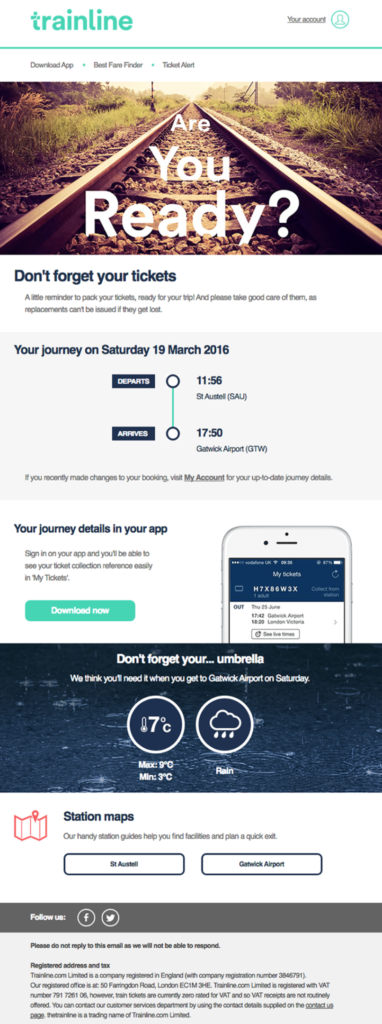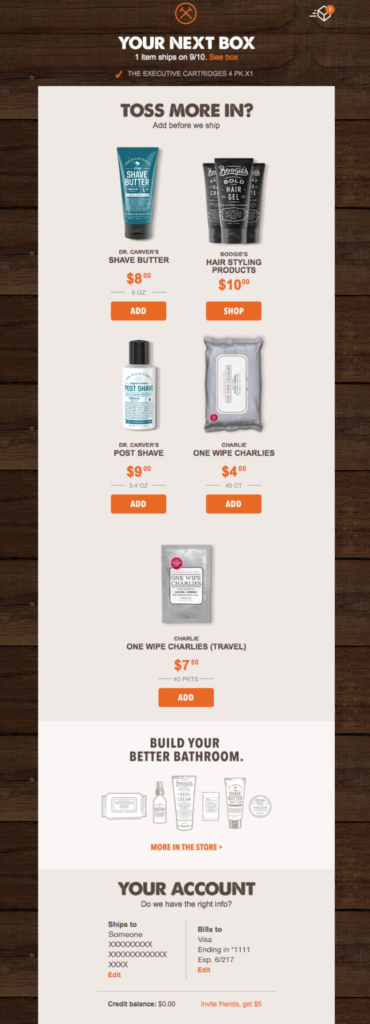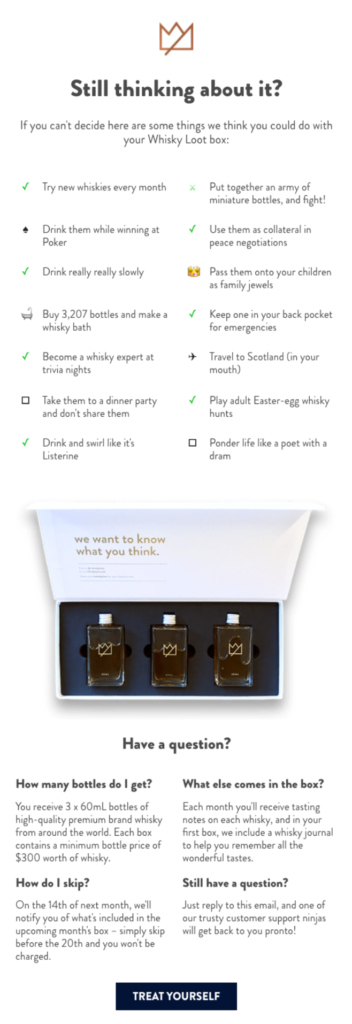Transactional emails. We’ve probably all received at least one, but I bet heaps more, after all they’re a staple for business.
Like so many staples it’s not always easy to get them right, so we’ve asked our friends at Cumulo9 to help us out with some transactional email tips. But a quick refresher before we get to that.
What are transactional emails?
A transactional email is a personalised, system-triggered one-on-one email with your customers about a specific transaction. It is not a mass marketing email with personalised content but a message sent off by a trigger event.
These emails are usually designed to provide customers with important information or updates about their purchases.
There are so many uses for transactional emails, but here are some examples:
- Invoices, receipts and statements
- Abandoned shopping carts
- Forgotten password notifications
- Account-related alerts
- Welcome emails
- Confirmation emails for purchases, changes or subscriptions
- Shipping notifications and updates
Difference between a transactional email and a marketing email
While both types of emails can play an important role in the success of a business, they serve different purposes.
Transactional emails are automatically-generated emails that are triggered by a specific action or event, such as a user signing up for an account, making a purchase, or resetting a password. These emails are designed to provide important information to the recipient.
On the other hand, marketing emails are used for promotion, generating leads, or building brand awareness. These emails are typically sent on a regular schedule and may include promotions, discounts, or other incentives to encourage the recipient to take action. Marketing emails are typically sent to a list of subscribers or customers who have opted-in to receive them, and they may be more heavily designed, with images, graphics and other elements to capture the attention of the recipient.
Why are transactional emails important?
There are a wide variety of advantages of transactional emails that your business can leverage:
1. Transactional emails save you time
As Cumulo9 points out, they can make business a whole lot easier. Having your invoices automatically generate and send to your customers using a pre-designed template can save you a heap of time. This is the same for purchase confirmations, welcome emails and shipping notifications.
2. Improved communication and customer experiences
Sending a timely confirmation or acknowledgement of the transactions made by your customers can help build trust and credibility. For example, transactional emails can not only help customers feel valued after purchase but can also provide them with regular updates and necessary information. Therefore, transactional emails are a crucial aspect of building positive customer experiences and consequently improving customer retention over time.
3. Brand recognition
Transactional emails usually include your business’s logo, typography, branding and contact information. This can help build brand recognition by consistently reinforcing your business’s identity in the customer’s mind. Furthermore, since customers typically already expect to receive a transactional email immediately after purchase, they have higher engagement levels and click-through rates than promotional emails. Therefore, this can enable your business to build brand visibility at crucial stages of the customer lifecycle.
4. They can recapture lost revenue
Transactional emails can be an extremely effective method of boosting and recapturing lost revenue. If you run an online shop, you may be able to generate insights regarding the number of potential customers that add products to their shopping cart but don’t actually complete purchases.
Recent statistics have shown that the average cart abandonment rate in Australia is approximately 75%. However, cart abandonment emails can be an extremely effective method of recovering abandoned transactions. Research indicates that the average conversion rate for a shopping cart abandonment email is up to 18.64%.
Ok, ok, they’re important, I hear you saying, but how do we get them right? I’m glad you asked.
How to get transactional emails right
According to Cumulo9, there are two key areas to get right; design and deliverability.
Design & personalisation as part of customer experience
Therefore, your transactional emails need to be nice to look at, easy to read and consistent with your brand’s vision. Furthermore, a well-designed and personalised email can also help to reduce the chances of the email being marked as spam, as it gives the impression of a more legitimate and trustworthy sender.
If you’re looking for ideas on how to make your emails beautiful, check out this blog.
Personalisation is also key – “Hey there” is not good enough, it shows a lack of insight into the recipient or audience. Personalised transactional emails are an extremely effective method to foster customer loyalty as well as recognise the value that each individual customer brings to your business. Recent studies have shown that approximately 74% of marketers attribute targeted personalisation as the primary reason for increased customer engagement.
Here’s some transactional email best practices to keep in mind:
- Ensure your transactional messaging is sent from a real person (including the sender name and email address.
- Identify the recipient by name in the body of the message.
- Create content that is relevant and customised to each recipient. This may include shipping invoice information, tracking links, or account details.
- Lure customers back to the website so make sure you provide a clear call to action.
- Use this opportunity to share helpful resources, and promote the latest sales and referral programs to build brand loyalty.
Deliverability is key
It is crucial for transactional emails to be sent to customers immediately after they have completed their purchase. Otherwise, your customers may be left wondering if their transactions have been completed. Not receiving a confirmation of a completed transaction can significantly impact their confidence and trust in your business as well as their willingness to undergo further purchases in the future.
There are several different methods of optimising deliverability and ensuring that your transactional email doesn’t end up in the recipient’s junk folder. If your business does not begin employing the use of SPF and domain validation, DKIM and DMARC, you may run the risk of perfectly designed and customised messages being rejected by the recipient email server.
Transactional email templates that your business can leverage
1. Order confirmations
A confirmation email is used to notify customers when a specific initiated action has been completed such as a ticket purchase completion or an online shopping purchase. This type of transactional email usually includes important details such as the items purchased, the total cost, and the estimated delivery date.
This transactional email template below is highly personalised to each individual customer. With each ticket holder is provided with a weather update and station map to ensure that each customer is well-prepared for their journey.

2. Shipping confirmations
Shipping confirmations are usually sent to customers once their product order has been shipped. This type of transactional email will usually include information that a customer may need during the shipping process such as the order number, tracking information and more.
This shipping confirmation email has provided the customer with all the information they may require such as tracking information, the availability of delivery appointments and the shipping address. They have also showcased the value they are providing to their customers by adding a helpful video about their delivery process and a referral program to encourage repeat purchases.

3. Subscription emails
These types of emails are usually sent after a customer has subscribed to a service or product. They typically include the nature of the subscription plan, terms of the subscription and other relevant information.
This subscription confirmation has not only provided the customer with a reminder of their next subscription renewal and delivery but has also leveraged their transactional messaging as an opportunity to upsell alternative products.

4. Cart abandonment alert
A cart-abandonment alert is sent to prospective customers that have placed products in their shopping carts but did not complete the transaction. This type of transactional email is an opportunity to remind customers to revisit your website and complete previous purchases.
This cart abandonment alert provides customers with the necessary information that they may require to complete their purchase as well as utilises humour and FAQs to increase engagement.

Need Help?
If you need any help getting your transactional messaging right, why not get in touch with Cumulo9.





